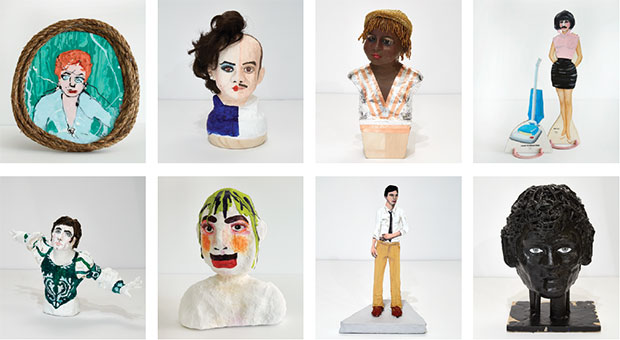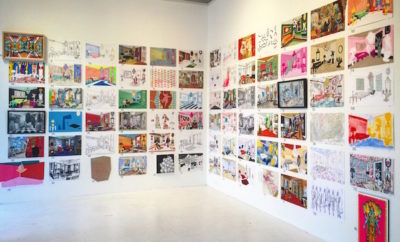 Clockwise from top left: Amanda Blake, Charles Ludlam, Sylvester, Freddie Mercury, Robert Mapplethorpe, Perry Ellis, Leigh Bowery, Rudolf Nureyev. | WOLFGANG VOLZ PHOTO
Clockwise from top left: Amanda Blake, Charles Ludlam, Sylvester, Freddie Mercury, Robert Mapplethorpe, Perry Ellis, Leigh Bowery, Rudolf Nureyev. | WOLFGANG VOLZ PHOTO
Feature
FROM THE EDITOR: Forget Me Not
I wrote my first obituary for a victim of AIDS in the mid-1980s. He was an architect with an acute talent and a too-small body of fine buildings. My editors and I struggled with what to call his death, and I think we settled on “complications due to pneumonia,” which was indeed often the immediate cause of death, even though the real cause was Acquired Immune Deficiency Syndrome. A second obit followed, another architect, then a designer. AIDS struck the arts particularly hard.
These memories flooded back recently after I saw Doug Meyer’s poetic and utterly moving installation called Heroes. It is fifty portraits of victims of AIDS—young, old, male, female, gay, straight—made in a variety of mediums and with a range of representation. Some are pitch-perfect, others are more idiosyncratic; still others pay homage in a fashion that is more symbolic than representational.
Seeing Heroes made me recall the stirring lecture Vincent Scully gave at Yale for many years (and which I was lucky enough to attend some years ago) on the Thiepval Memorial to the Missing of the Somme, the looming classicized World War I monument by Edwin Lutyens that by its sheer monumentality (and its listing of names) is incredibly powerful. That memorial—and indeed that lecture—helped inspire Maya Lin’s profound, abstract Vietnam Memorial Wall, which was completed in 1982. The act of mourning loss is inevitable, but memorializing death (especially senseless death) in art allows us to share it much more universally. Maya Lin’s granite gash in the earth with its list of names brought it all to a new level.
Heroes is almost the opposite—impermanent rather than fixed, figurative rather than symbolic, small rather than large. It lets the part represent the whole, rather than the other way around. But for all that, the experience of seeing it is utterly moving. The Heroes installation is accompanied by fifty obituaries as they ran. I wrote several similar obituaries, and there were thousands of others; it’s safe to say that only a small percent of the estimated 34 million people who have died of AIDS were honored with obituaries.
The “Heroes Tour,” as Doug calls it, started in New York at designer Liz O’Brien’s East 61st Street gallery in Manhattan, then moved on to the Miami Design District, where Nisi Berryman showed it at NIBA Home. It opens at Patrick Dragonette’s La Cienega–based gallery in Los Angeles on October 6. (The project itself evolved from an installation at the annual DIFFA—Design Industry Foundation Fights AIDS—dinner a year ago.)
Our need to build memorials—and to remember—persists. We still fight wars, and soldiers and civilians still die in them. Terrorist attacks in Paris, Brussels, Istanbul, Baghdad, Saudi Arabia, and now Nice, and the seemingly unending gun massacres in America remind us of the irrational fragility of life. Scarily, there is no simple strategy to stop hate (though in America gun control would help).
Memorials remind us why we need to persist. Philip Johnson once said, “You cannot not know history.” He was right. And ultimately the reason to memorialize is not merely to remember, but to do better going forward. We can only hope.














